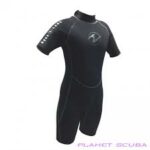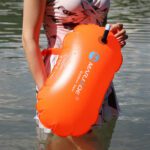

Open water swimming is a thrilling and challenging aquatic sport that takes place in natural bodies of water such as lakes, rivers, and oceans. Unlike swimming in pools, open water swimming typically involves navigating through unpredictable conditions like waves, currents, and varying water temperatures.
Open water swimming requires a different set of skills compared to pool swimming. Swimmers must be comfortable sighting landmarks to stay on course, dealing with changing water conditions, and managing their energy over long distances. Safety precautions such as wearing buoyancy aids, having a support crew, and being aware of marine life are also crucial aspects of open water swimming.
DIFFERENCE BETWEEN SWIMMING IN OPEN WATER AND SWIMMING IN POOL
OPEN WATER SWIM
SWIMMING IN POOL
Open water swimming takes place in natural bodies of water such as lakes, rivers, oceans, or reservoirs. Swimmers contend with varying water temperatures, currents, waves, and visibility conditions. Open water swims can also include navigation around buoys or course markers.

Pool swimming occurs in controlled environments with clear, calm water. Pool conditions are consistent in terms of temperature, visibility, and water movement

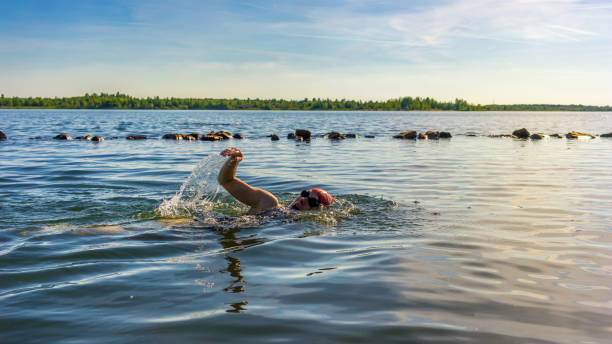
Open water swims can vary widely in distance, from short races or training swims to marathon-distance swims. Courses may include straight lines, loops, or point-to-point routes, often requiring navigational skills to stay on course.
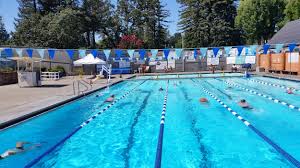
Pool swims typically involve swimming laps in designated lanes with set distances (e.g., 25 meters, 50 meters). Pool courses are straightforward and easy to follow, with flip turns at the ends of each lap.
Swimmers in open water must adapt to changing conditions such as water temperature, weather (wind, rain, sun), and water quality (waves, currents, debris). These factors can significantly impact swimming performance and require different strategies for navigation and pacing.

Pool swimmers experience consistent conditions, including controlled water temperature, minimal external factors (e.g., wind), and clear visibility. This allows for focused training and precise measurement of performance metrics like lap times and stroke efficiency.
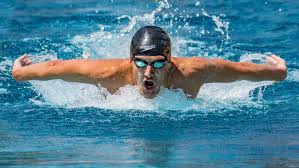
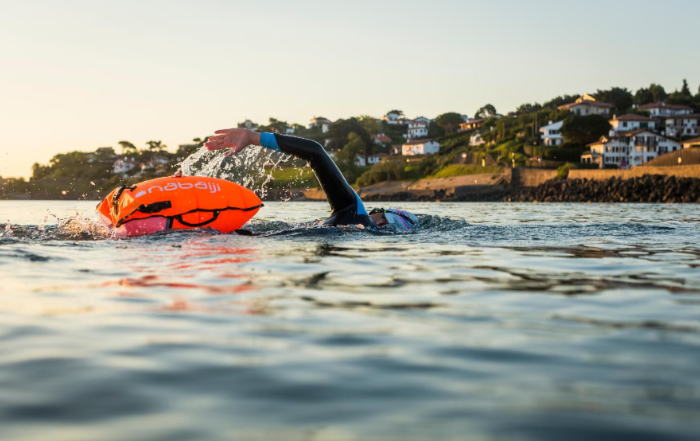
Open water swimmers must be mindful of safety considerations such as water depth, marine life, boat traffic, and weather conditions. Safety measures like wearing a buoyancy aid, swimming with a buddy, or having a support crew are often recommended.
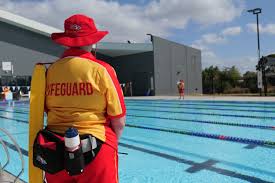
Pool swimming is generally considered safer due to controlled conditions, lifeguards on duty, and clear visibility for supervision. However, basic safety protocols such as swimming with a buddy and knowing emergency procedures are still important.
Open water swimming requires specific training and techniques to navigate varying conditions, sight landmarks, manage energy over long distances, and deal with currents or waves. Skills like drafting (swimming behind another swimmer to reduce drag) and open water breathing are also important.
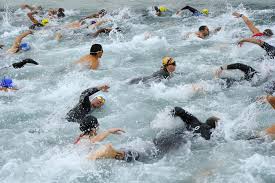
Pool swimming allows for focused training on stroke technique, speed, endurance, and interval training. Swimmers can use pool sessions to refine turns, starts, and underwater streamline positions.
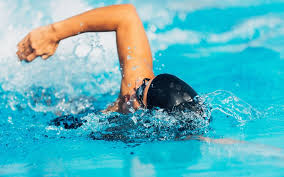
ADVANTAGE AND BENEFITS OF OPEN WATER SWIMMING
-
Full-Body Workout
Open water swimming engages multiple muscle groups simultaneously, providing a comprehensive full-body workout. The resistance from the water helps build strength, endurance, and cardiovascular fitness.
-
Improved Technique
Swimming in open water requires different techniques compared to pool swimming. It enhances skills such as sighting, navigation, and adapting to changing conditions, leading to improved swimming proficiency and confidence.
-
Variety and Adventure
Open water swimming offers a variety of settings and challenges, from calm lakes to dynamic ocean waves. This variety adds excitement and adventure to the swimming experience, making it more enjoyable and motivating.
-
Connection with Nature
Open water swimming allows swimmers to connect with the natural environment, appreciating the beauty of marine life, landscapes, and ecosystems. This connection fosters a sense of environmental awareness and promotes conservation efforts.
-
Challenge and Achievement
Setting goals such as completing a specific distance swim or participating in open water races can be a motivating challenge. Achieving these goals provides a sense of accomplishment and boosts self-confidence.
OPEN SWIMMING WATER TECHNIQUE
EQUIPMENT FOR OPEN WATER SWIMMING
When preparing for open water swimming, having the right equipment can enhance your comfort, safety, and performance. Here are some essential pieces of equipment for open water swimming such as goggles, wetsuit, safety buoy and buoyancy aid.

